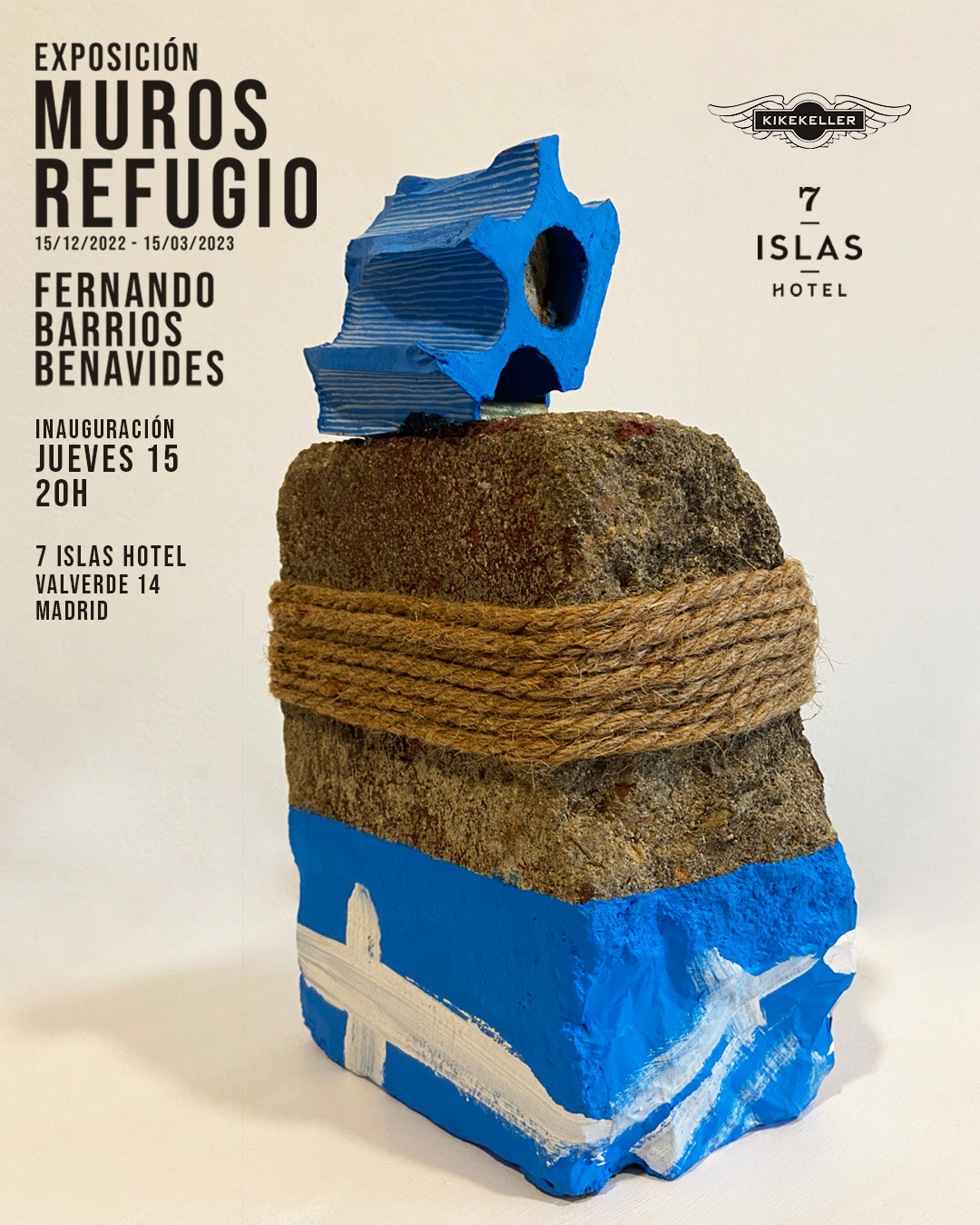
Hace un tiempo se me quedó grabada en la mente una publicación que vi en alguna red social.
Se trataba de una fotografía de la infancia de una persona anónima. «Siento alegría y tristeza a la vez viendo esta foto» comentaba. En ella, se podía ver a un grupo de niños vestidos con ropa rota, algunos sin zapatos, las paredes de la habitación estaban desconchadas y el aspecto general de la casa era muy pobre. Sin embargo, los niños retratados sonreían y mostraban expresiones de felicidad absoluta. Todos se encontraban en torno a una mesa sobre la que había una tarta de cumpleaños de colores y una cocacola.
De alguna manera, esos colores chillones de la tarta gritaban: ¡hoy es un día muy feliz!. Y en ese momento, para ellos, la pobreza quedó en un segundo plano.
La fotografía me transmitió felicidad, ternura y, a la vez, profunda tristeza.
Esto me llevó a reflexionar sobre cómo, a cualquier escala, convivimos con la felicidad y la tristeza de forma simultanea y sobre el efecto que provoca en nuestras emociones la estética de todo lo que nos rodea.
La miseria es algo que nadie quiere ver, ni la propia, ni la de los demás.
La felicidad es una necesidad humana básica y, a veces en las situaciones de pobreza más extrema, ésta solo llega de forma muy infantil. Ejemplo de ello son aquellas favelas que pintan de colores para «tapar» la miseria o esas casitas con cubierta de zinc y paredes con humedades pintadas de azul cielo. ¡Azul cielo, el color favorito de los niños!
Pudiera parecer que, de alguna manera mágica, el color azul cielo nos devuelve a la infancia y nos permite poseer y habitar un entorno menos miserable.
Cada día, camino a mi estudio, paso por al lado de un poblado con un vertedero ilegal de escombros donde se amontonan montañas de desperdicios y basura.
Al observar de cerca estos escombros, puedo darme cuenta de que en realidad su origen es muy preciado. El cemento, los ladrillos, el yeso, la chatarra... Todos están hechos a partir de recursos naturales valiosos. Además, en muchos casos formaron parte de una vivienda, la posesión material más valiosa de una familia. Muchas personas pusieron su esfuerzo, su tiempo, su talento y su trabajo en hacerlo realidad.
También vi en los escombros restos de gotelé y papel pintado y pensé en la pátina de intervención humana que queda en todo y en la belleza que persiste en esto.
En mi caminata diaria, observo también paredes y muros en cuya superficie conviven restos de carteles que anuncian la llegada del circo a la ciudad, grafitis, polvo, inscripciones de amor adolescente... De alguna manera, el entorno maltratado nos cuenta su historia.
En este proyecto trabajo desde la ruina para dar valor a su historia. Desarrollo con ella un retrato psicológico desde la honestidad de los materiales de construcción. Hablo de muros y escombros, de quienes los habitaron, de la vida cotidiana y las emociones que conviven en nuestro interior. De la felicidad triste de las celebraciones, de mensajes sencillos y verdaderos y del desamparo que encuentro en el color azul cielo, el favorito de los niños.
[EN]
Some time ago a publication I saw on a social network stuck in my mind.
It was a childhood photograph of an anonymous person. «I feel joy and sadness at the same time seeing this photo» he commented. In it, you could see a group of children dressed in torn clothes, some without shoes, the walls of the room were peeling, and the general appearance of the house was very poor. However, the children portrayed were smiling and showed expressions of absolute happiness. They were all gathered around a table on which there was a colorful birthday cake and a bottle of coke.
Somehow, the bright colors of the cake shouted: today is a very happy day! And at that moment, for them, poverty was in the background.
The photograph conveyed happiness, tenderness and, at the same time, deep sadness.
This led me to reflect on how, on any scale, we live with happiness and sadness simultaneously, and on the effect that the aesthetics of everything around us have on our emotions.
Misery is something that no one wants to see, neither their own, nor that of others.
Happiness is a basic human need and sometimes, in the most extreme situations of poverty, it only takes a very childish appearance. An example of this are those favelas painted in bright colors to «cover» the misery, or those little houses with zinc roofs and damp walls painted sky blue. Sky blue, children's favorite color!
It seems that, in some magical way, the color sky blue brings us back to childhood and allows us to own and inhabit a less miserable environment.
Every day, on the way to my studio, I pass by a slum with an illegal rubble dump where mountains of waste and garbage are piled up.
As I look closely at this rubble, I can see that actually its origin is very precious. Cement, bricks, plaster, scrap metal... They are all made from valuable natural resources. Moreover, in many cases, they were part of a house, the most valuable material possession of a family. Many people put their effort, their time, their talent and their work in making it a reality.
I also saw in the rubble remains of popcorn walls and wallpaper and thought of the patina of human intervention that remains in everything and the beauty that persists.
On my daily walk I also observe walls on whose surface coexist remains of posters announcing the arrival of the circus in the city, graffiti, dust, inscriptions of adolescent love... Somehow, the battered environment tells us its history.
In this project I work from the ruin to give value to its history. I develop with it a psychological portrait from the honesty of the construction materials. I speak of walls and rubble, of those who inhabited them, of daily life and the emotions that coexist within us. Of the sad happiness of celebrations, of simple and true messages and of the helplessness that I find in the sky blue color, the children's favorite.

Exposición Muros Refugio en 7 Islas Hotel Madrid
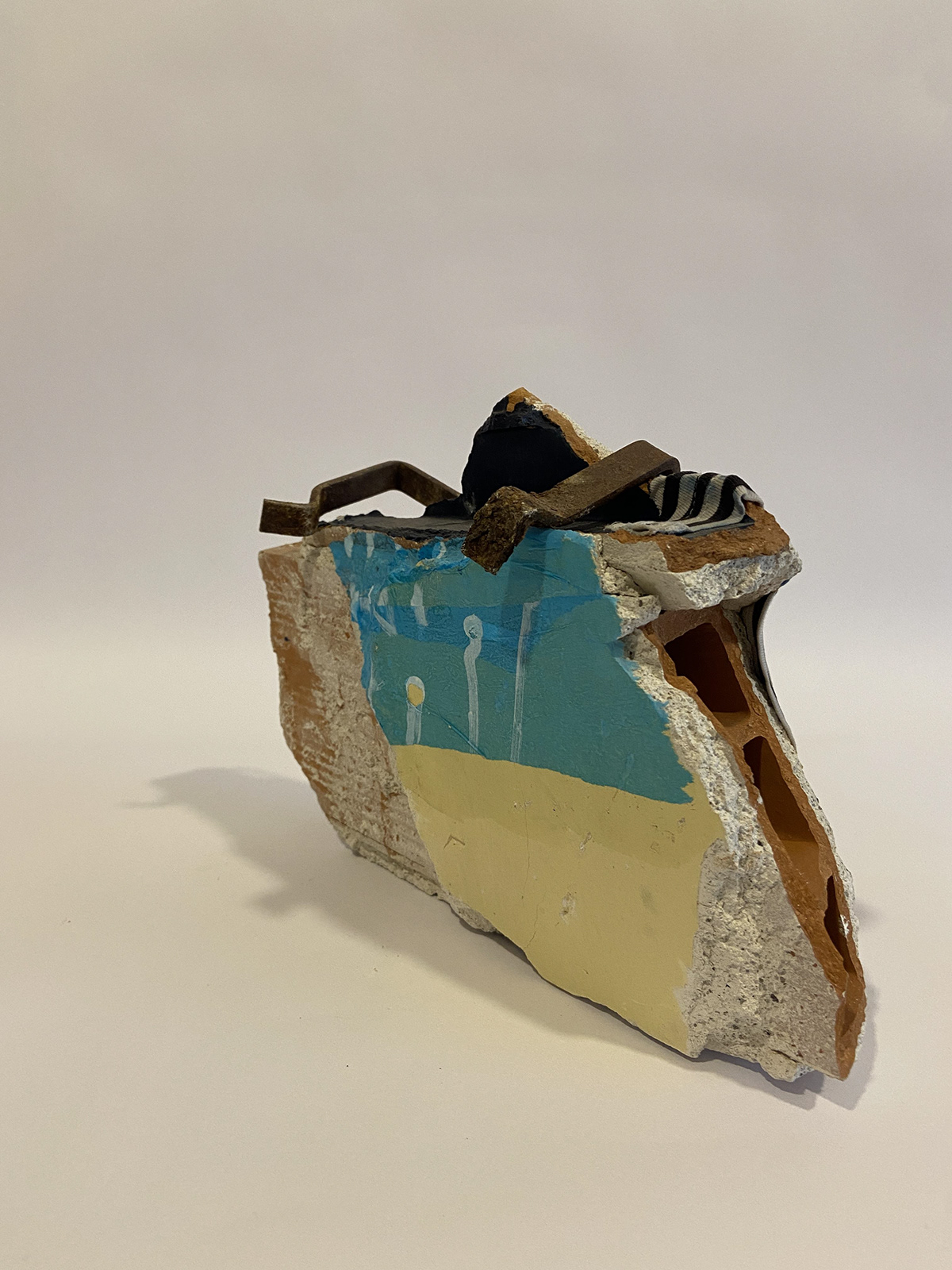
Escombrera I
Ladrillo, yeso, tela, papel y metal
Brick, plaster, fabric, paper and metal
25 x 25 cm / 9.84 x 9.84 inch



Detalles obra Escombrera I
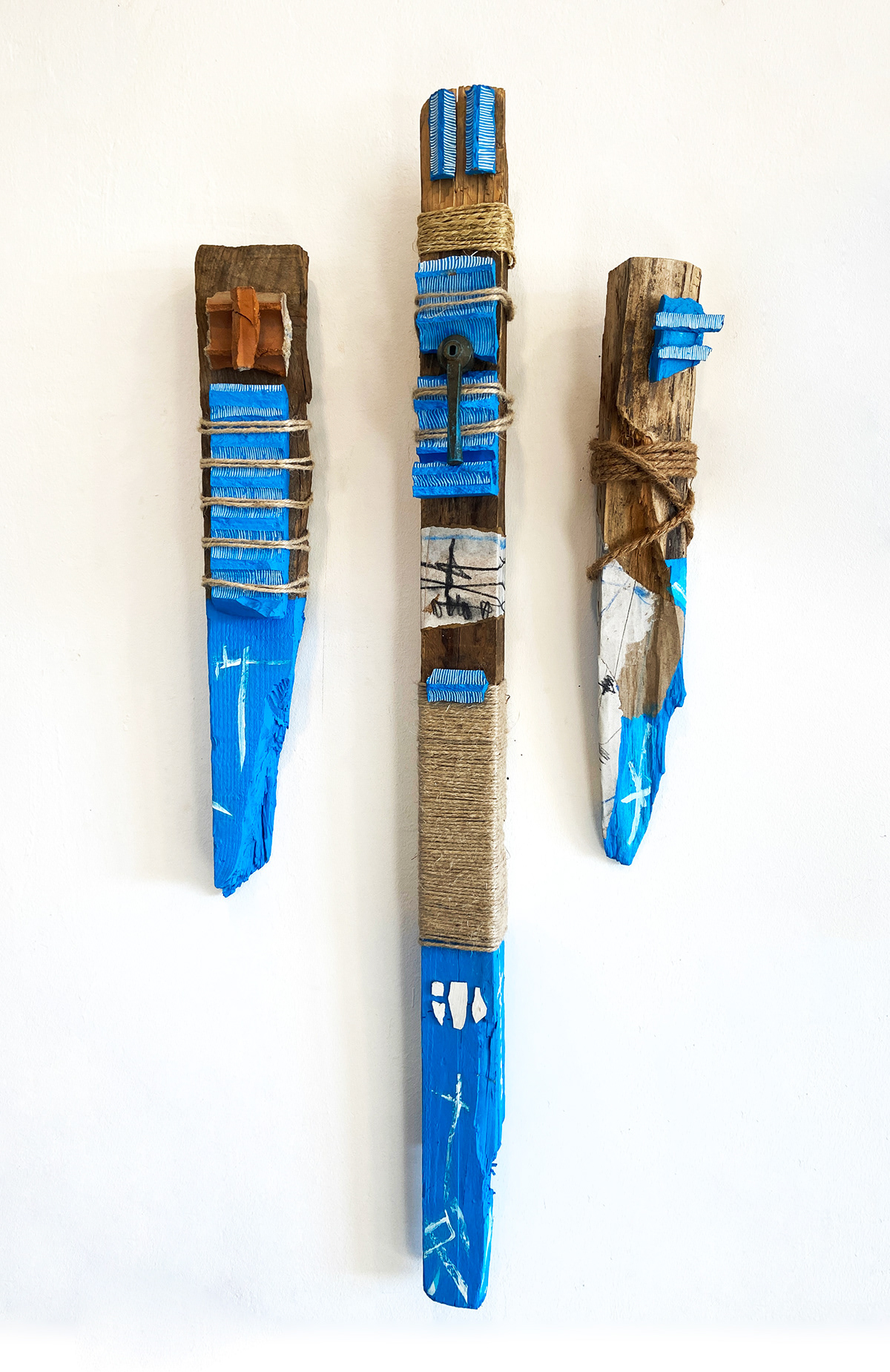
Buenos y malos ladrones
Ladrillo, yeso, tela, papel, madera y cemento
Brick, plaster, fabric, paper, wood and concrete
120 x 50 cm / 47.24 x 19.68 inch



Escombreras
Ladrillo, yeso, tela, papel y cuerda
Brick, plaster, fabric, paper and rope
25 x 25 cm / 9.84 x 9.84 inch

Escombrera I
Collage, rotulador, piedra y papel
Collage, marker, stone and paper
10 x 25 cm / 3.93 x 9.84 inch

Escombrera VI
Ladrillo, cuerda, hormigón, papel, tela y pintura acrílica
Brick, rope, concrete, paper, cloth and acrylic paint
25 x 25 cm / 9.84 x 9.84 inch
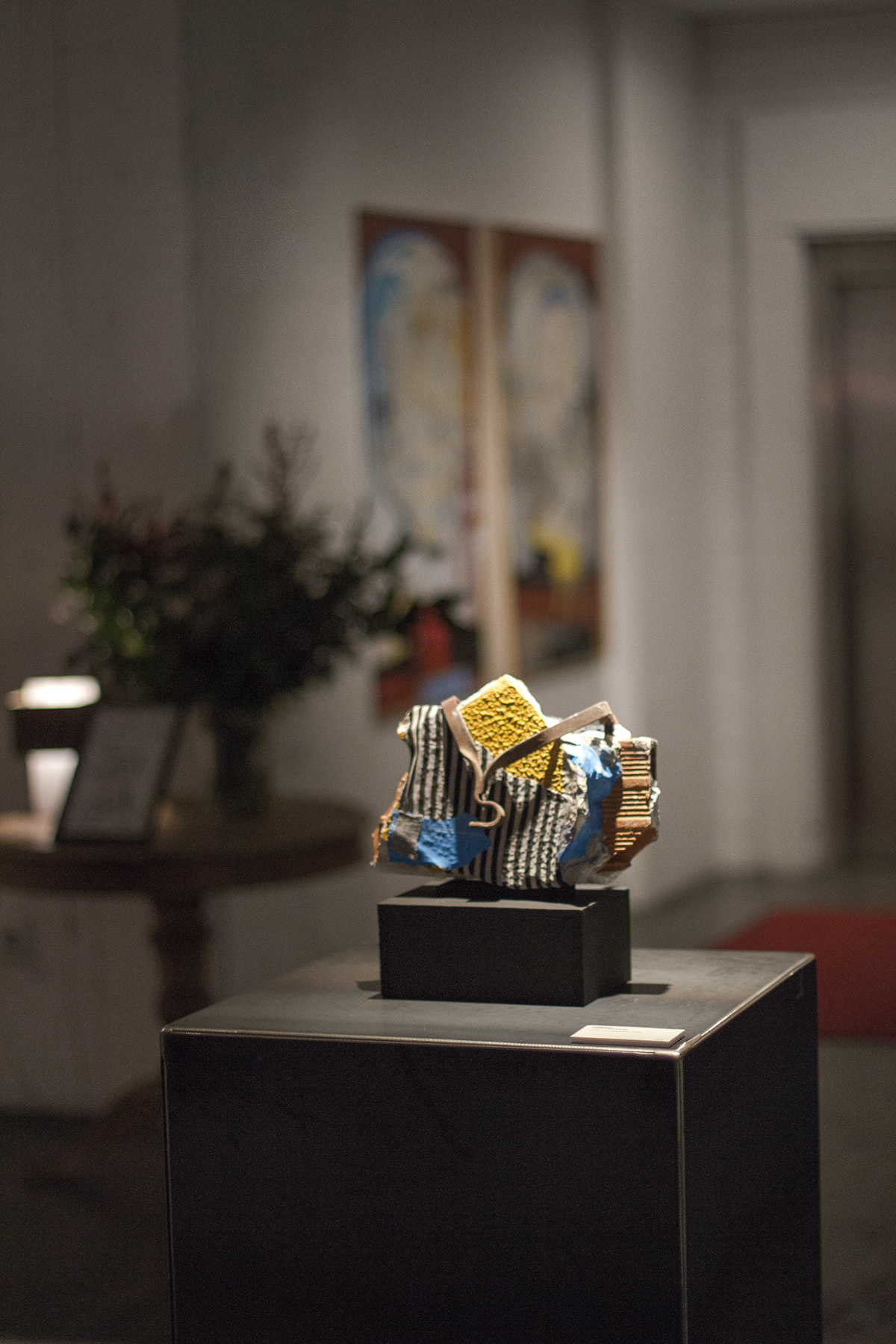
Exposición Muros Refugio en 7 Islas Hotel Madrid. Fotografía: Mariana Borau

Porque tú me miras
Pintura acrílica, cemento, carboncillo, grafito rotulador sobre lienzo
Acrylic paint, cement, charcoal, graphite, marker pen on canvas
45 x 35 cm / 17.71 x 13.77 inch


Exposición Muros Refugio en 7 Islas Hotel Madrid. Fotografías: Mariana Borau


Lora / Arder amando a todo el mundo es volar
Pintura acrílica, cemento, carboncillo, grafito, collage y rotulador sobre lienzo
Acrylic paint, cement, charcoal, graphite, collage and marker on canvas
130 x 88 cm / 51.18 x 34.64 inch

Exposición Muros Refugio en 7 Islas Hotel Madrid. Fotografía: Sofía Guardiola
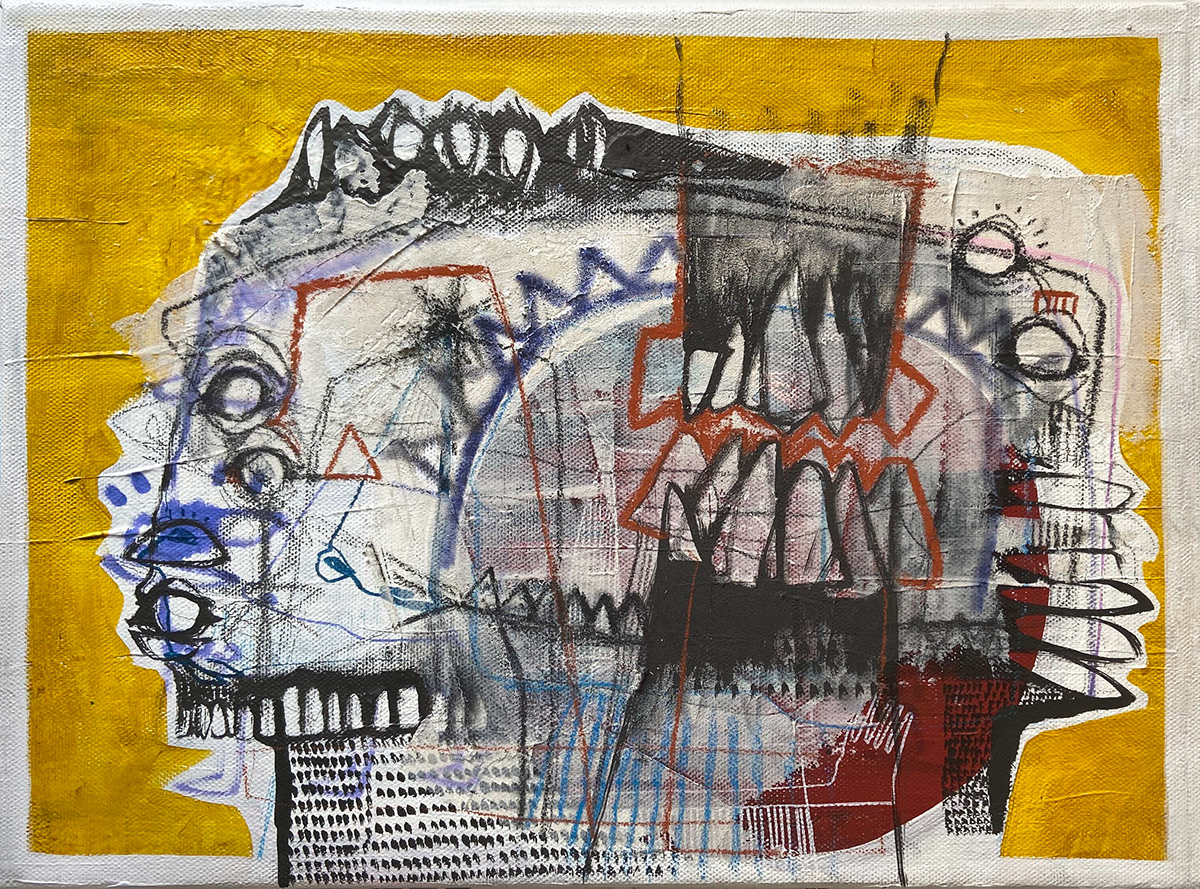
Demasiada luz
Pintura acrílica, cemento, carboncillo, grafito, tinta china y rotulador sobre lienzo
Acrylic paint, cement, charcoal, graphite, India ink and marker on canvas
28 x 35 cm / 11.02 x 13.77 inch
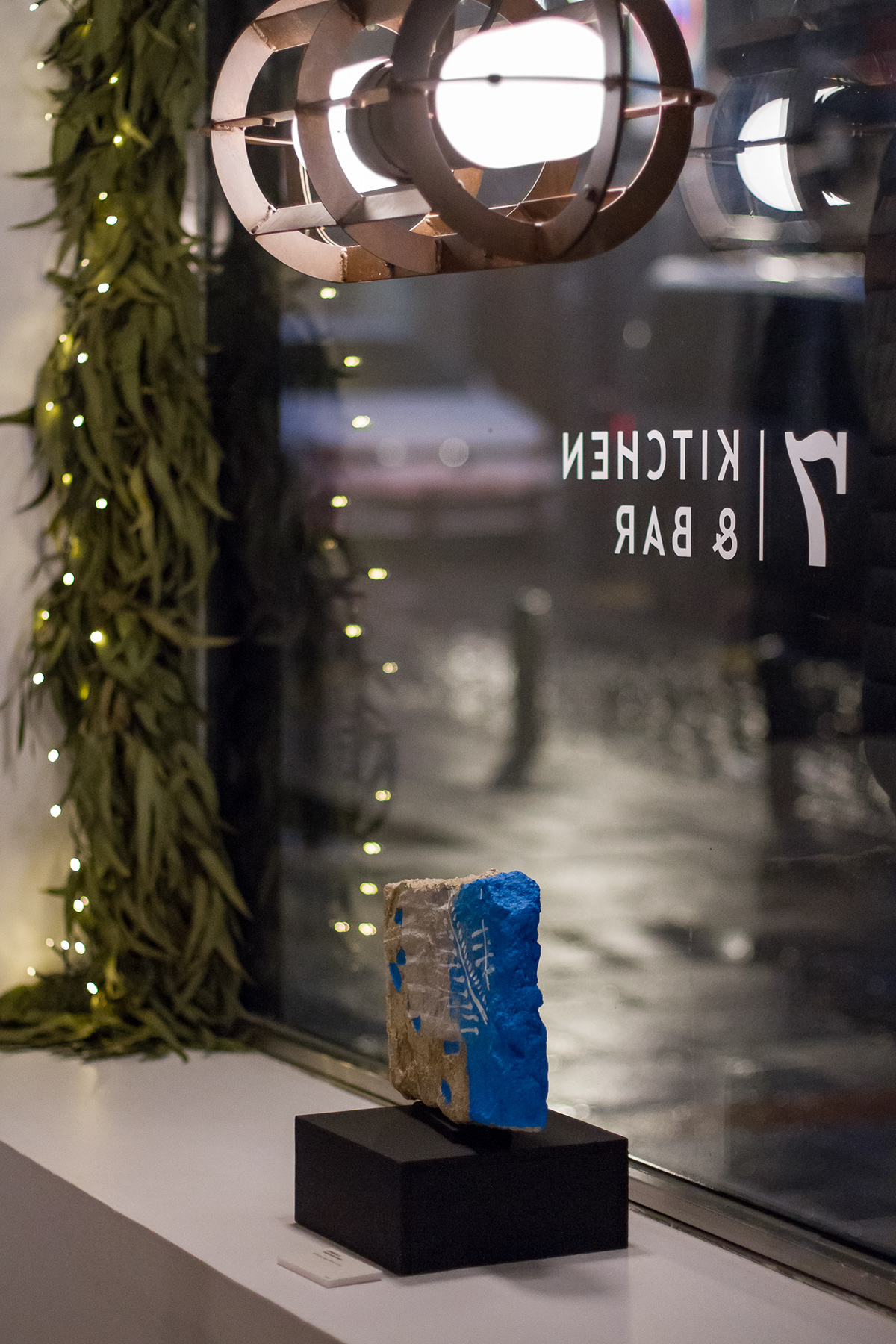
Exposición Muros Refugio en 7 Islas Hotel Madrid. Fotografía: Mariana Borau

Todas las heridas
Pintura acrílica, cemento, carboncillo, grafito, tinta china y rotulador sobre lienzo
Acrylic paint, cement, charcoal, graphite, India ink and marker on canvas
105 x 74 cm / 41.33 x 29.13 inch
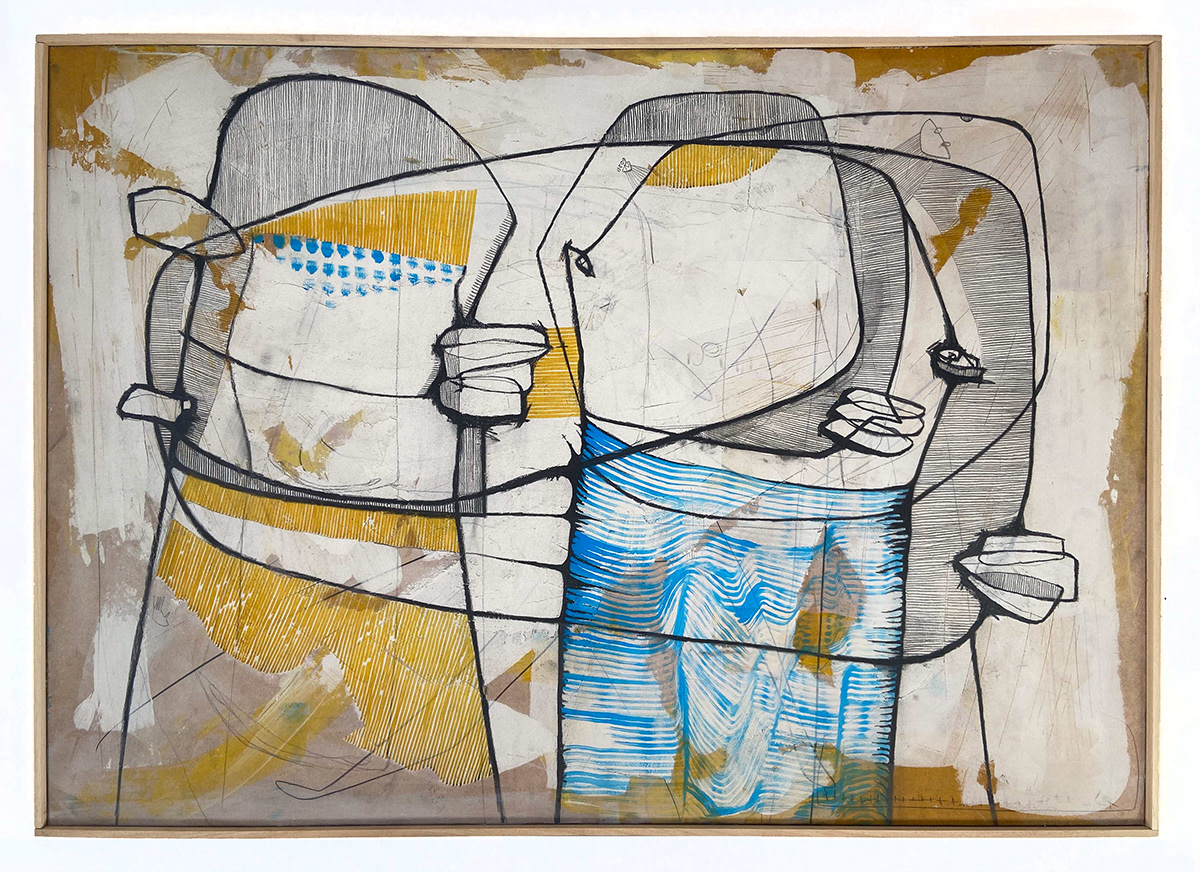
Dos intuiciones
Pintura acrílica, rotulador, grafito, carboncillo y cemento sobre tabla
Acrylic paint, marker, graphite, charcoal and cement on board
81 x 122 cm / 31.88 x 48.03 inch


A veces da igual / Asilvestrarse
Pintura acrílica, cemento, carboncillo, grafito, collage y rotulador sobre papel
Acrylic paint, cement, charcoal, graphite, collage and marker on paper
42 x 29,7 cm / 16.53 x 11.69 inch
29,7 x 21 cm / 11.69 x 8.26 inch


Escombrera IV
Ladrillo, hormigón, papel, tela y pintura acrílica
Brick, concrete, paper, cloth and acrylic paint
25 x 25 cm / 9.84 x 9.84 inch
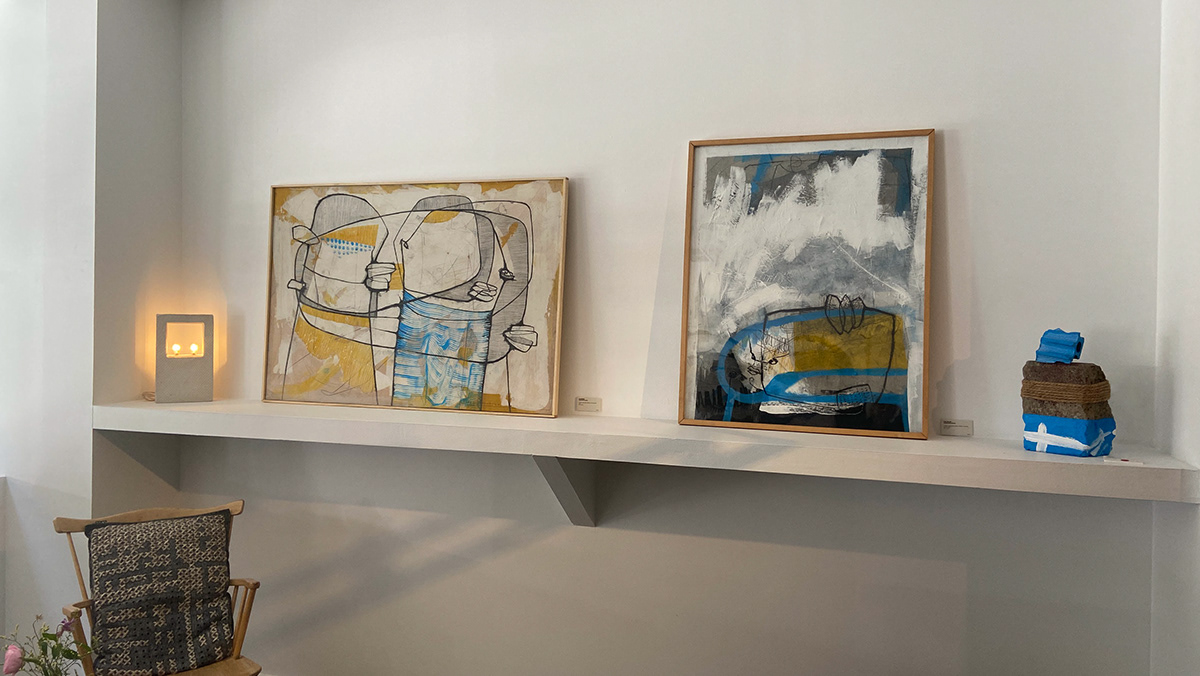


Exposición Muros Refugio en 7 Islas Hotel Madrid. Fotografías: Mariana Borau
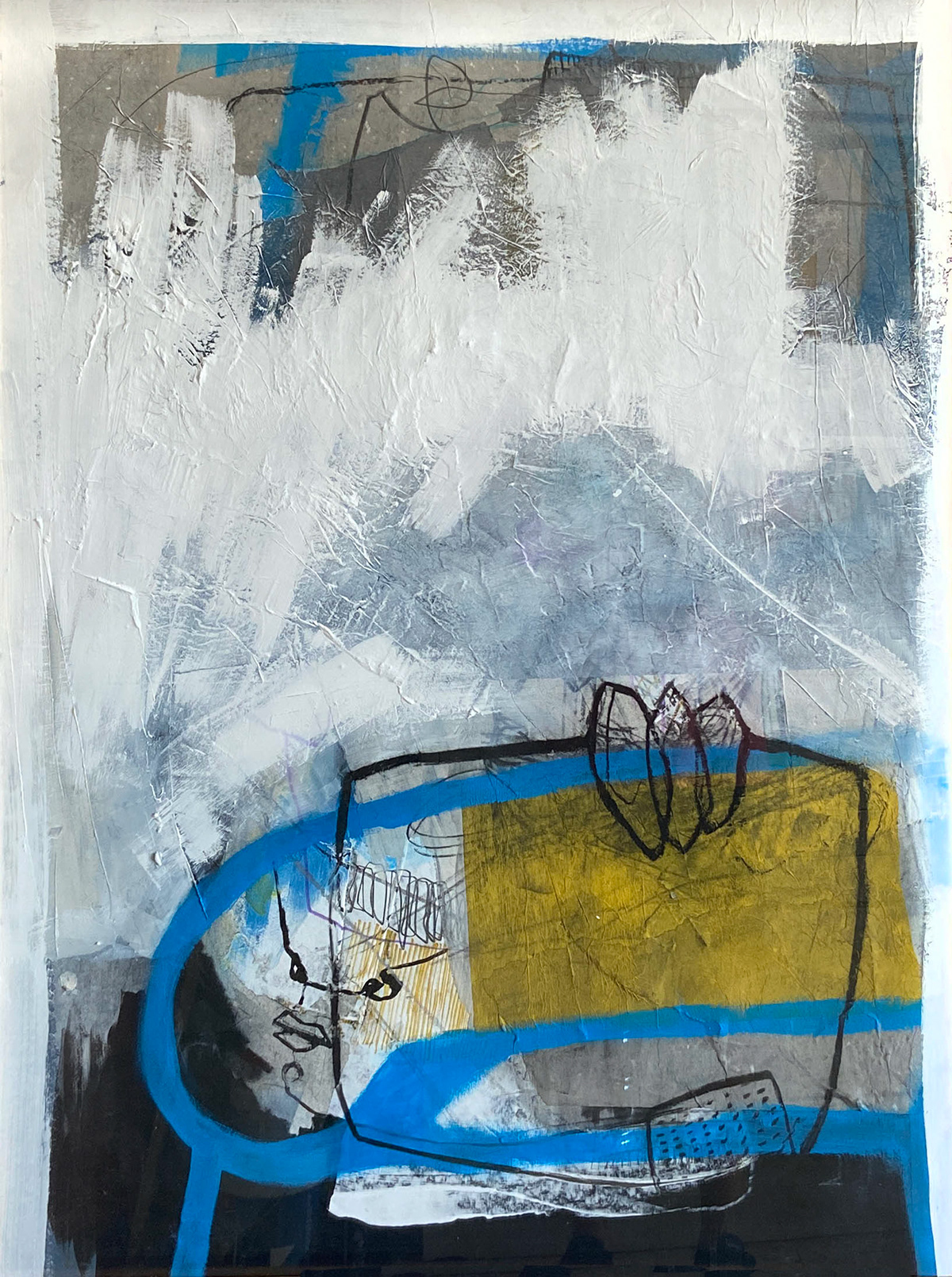
Media vida aquí
Pintura acrílica, cemento, carboncillo, grafito, collage y rotulador sobre cartón
Acrylic paint, cement, charcoal, graphite, collage and marker on cardboard
92 x 74 cm / 36.22 x 29.13 inch



Escombrera VII
Ladrillo, hormigón, papel, tela, cuerda y pintura acrílica
Brick, concrete, paper, cloth, rope and acrylic paint
25 x 25 cm / 9.84 x 9.84 inch


UNE EN149 / Inteligencia prelógica
Pintura acrílica, cemento, carboncillo, grafito y rotulador sobre lienzo
Acrylic paint, cement, charcoal, graphite and marker on canvas
70 x 50 cm / 39,37 x 19.68 inch


Pintura Escombreras
Pintura acrílica, cemento, carboncillo, collage, grafito y rotulador sobre lienzo
Acrylic paint, cement, charcoal, graphite and marker on canvas
90 x 65 cm / 35.4 x 25.6 inch

Los demás (y yo)
Pintura acrílica, cemento, carboncillo, collage, grafito y rotulador sobre tabla
Acrylic paint, cement, charcoal, graphite and marker on board
122 x 244 cm / 48.03 x 96.06 inch


Cualquier cosa cambia / Extramuros
Pintura acrílica, cemento, carboncillo, collage, grafito y rotulador sobre lienzo
Acrylic paint, cement, charcoal, graphite and marker on canvas
80 x 40 cm / 31.49 x 15.74 inch
35 x 28 cm / 13.77 x 11.02


Exposición Muros Refugio en 7 Islas Hotel Madrid




Apariciones / Desgastada / Más alto, más cerca / La abuela (abuela cimiento)
Pintura acrílica, cemento, carboncillo, collage, grafito y rotulador sobre lienzo
Acrylic paint, cement, charcoal, graphite and marker on canvas
21 x 14,5 cm / 8.26 x 5.70 inch



Dagas / Cemento y calcetín / 491
Pintura acrílica, cemento, carboncillo, collage, grafito y rotulador sobre lienzo
Acrylic paint, cement, charcoal, graphite and marker on canvas
35 x 28 cm / 13.77 x 11.02 inch
21 x 14,5 cm / 8.26 x 5.70 inch
35 x 28 cm / 13.77 x 11.02 inch
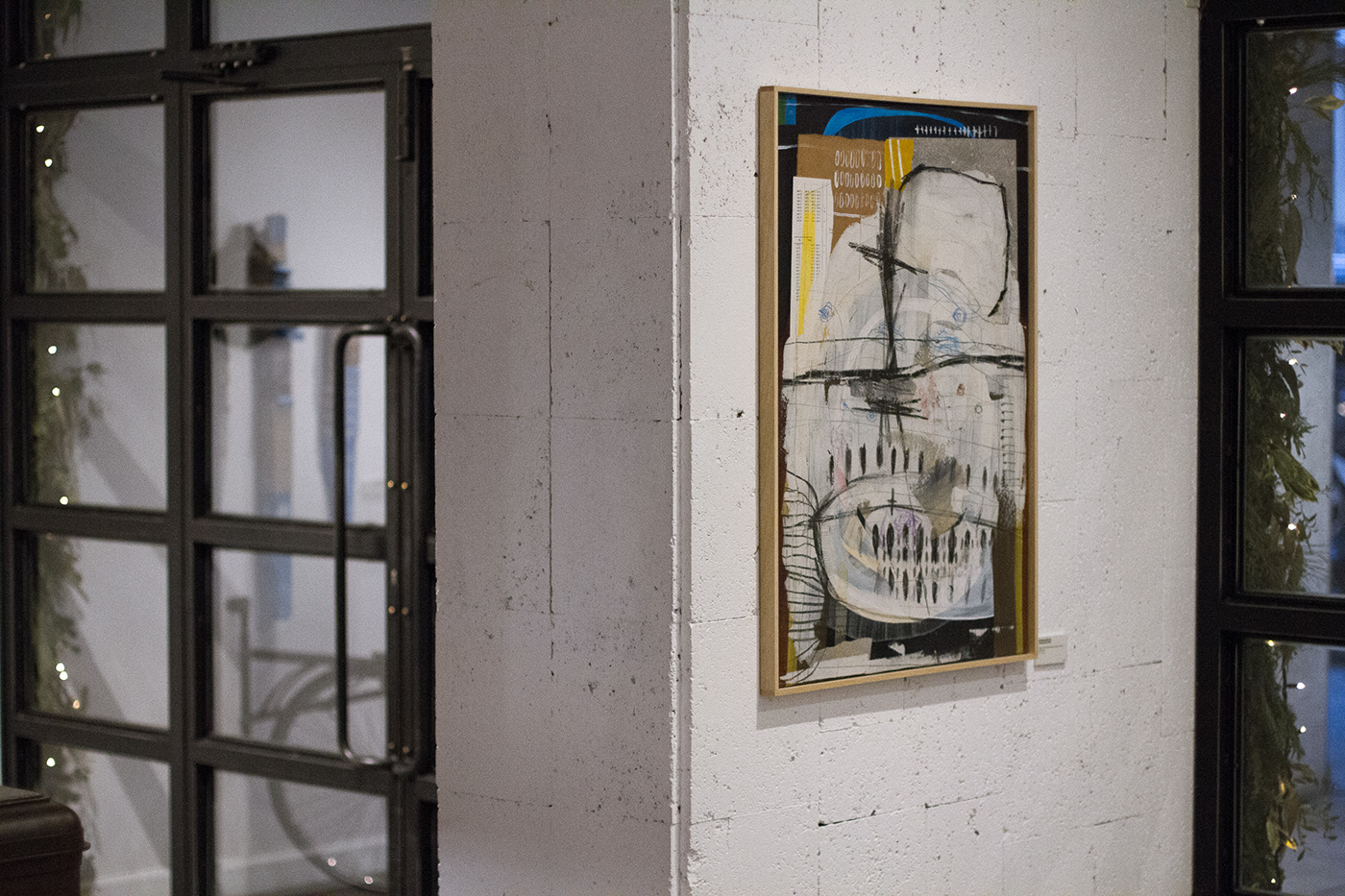
Exposición Muros Refugio en 7 Islas Hotel Madrid. Fotografía: Mariana Borau
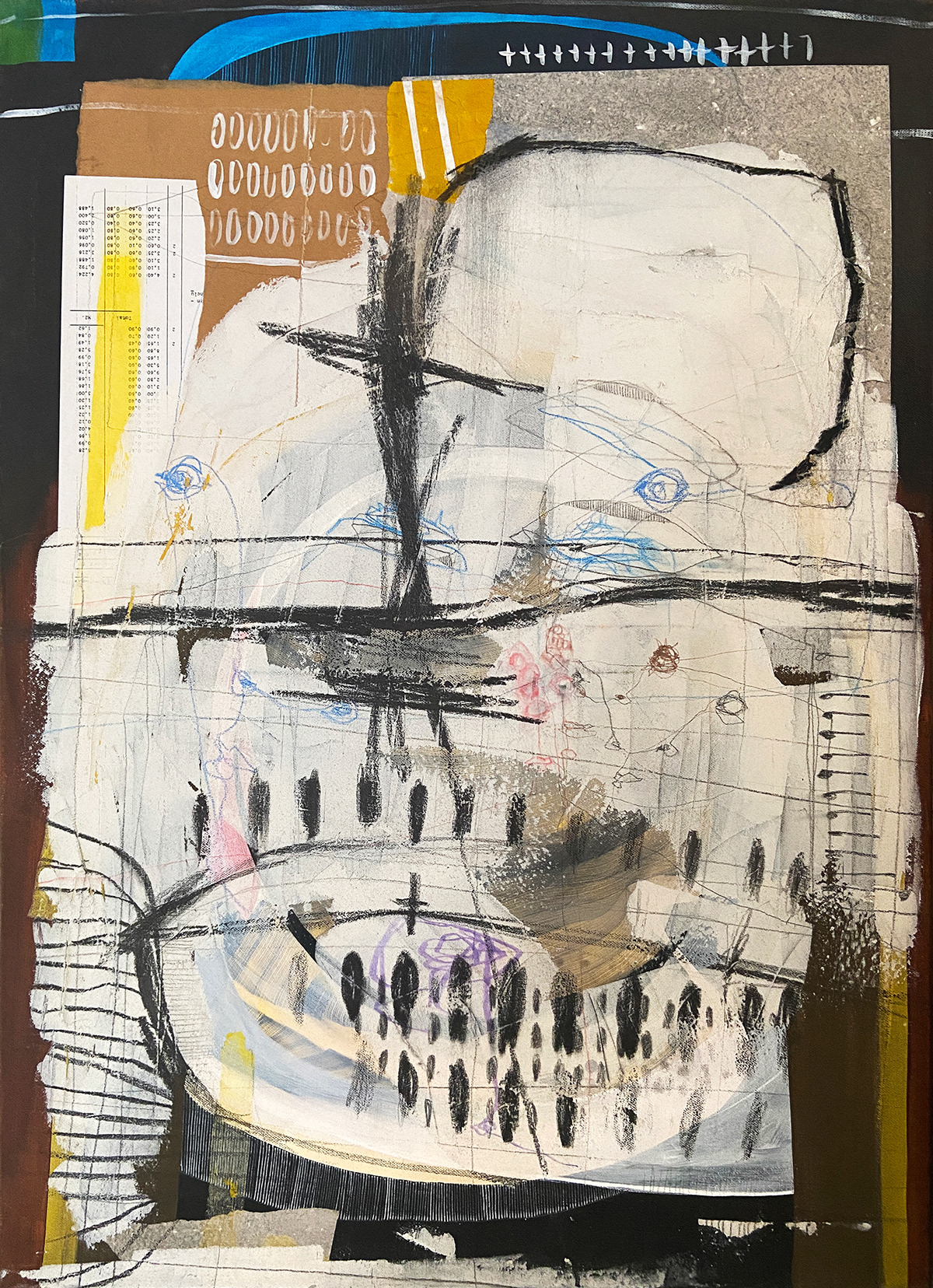
Mis brazos gigantescos
Pintura acrílica, cemento, carboncillo, tinta china, grafito y rotulador sobre lienzo
Acrylic paint, cement, charcoal, Indian ink, graphite and marker on canvas
90 x 65 cm / 35.4 x 25.6 inch

Muros Refugio
Pintura acrílica, cemento, carboncillo, grafito, collage y rotulador sobre lienzo
Acrylic paint, cement, charcoal, graphite, collage and marker on canvas
130 x 88 cm / 51.18 x 34.64 inch
+info:
Fernando Barrios Benavides
fernandobarriosbenavides@gmail.com


